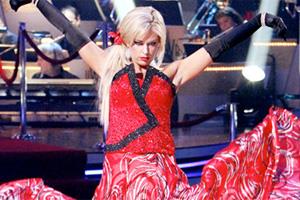News flash! Reality TV is not actually real. We know this, of course. Prying beneath the surface, though — taking a hard look at how the sausage is actually made — can be both fun and edifying.
As the late, great Garry Shandling (below) used to say on The Larry Sanders Show, reality TV is actually “live, on tape.”
Just one example: On The Biggest Loser, according to one reality-TV producer who revealed all, Breaking the Magicians’ Code-like for the Reader’s Digest online site not so long ago, contestants must climb onto the scale five or more times, so the producers can get all the angles on-camera.
Another example: American Idol changed in later seasons in ways those watching the show live might not have been aware.
Cell phones were forbidden for the contestants, for example, until three years prior to Idol’s calling it a day when the producers decided it would be a good idea for contestants to go on social media and exchange tweets and texts with their fan followers during commercial breaks. Connectivity became more important, at times, than the performances themselves. Did that hasten Idol’s demise? We’ll never know.
The Voice took that one further, by using social media in the final commercial break of each results show to decide who among the bottom three vote-getters might be saved that week. The Voice has proved successful — so far — because it found a way to use connectivity to engage viewers watching at home and make them part of the show. Whereas contestants once exchanged pleasantries to their followers on Twitter during commercial breaks, now those very same followers are instead initiating the conversation, by voting for their favorite, live, in real time, regardless of who sang which song, and how well, in the taped performance shows.
It’s those taped shows — produced in such a way that they seem live, but aren’t really — where reality-TV producers channel their inner storyteller.
• There’s no script per se but there are writers who twist and tweak footage to create “characters” and craft plots. That’s why a faction of the Writers’ Guild threatened to go on strike several years back, over that very issue.
• A day onscreen can actually take two or three weeks to set up and film. That part, at least, is not unlike TV drama.
• Casting directors favor flawed contestants over well-adjusted adults, the better to create mayhem with during filming, I didn’t care for this past season of American Horror Story (right) — judging from the response, I’m not alone there — but it was evident from the reality-TV driven premise and Blair Witch Project-like look that Horror Story creators Ryan Murphy and Brad Falchuk wanted to yank back the curtain, so to speak, on the lengths reality-TV producers will go to to heighten drama, and the needy narcissists who appear all too willing to perform for the cameras.
• Reality TV is less expensive to produce than TV drama. Those sexy locations on Survivor aside — Fiji! Samoa! Palau! — reality TV is often no more involving than casting people who clearly won’t get along, and then setting up cameras. Big Brother, The Bachelor and others like that are filmed in a mansion tricked out with hidden cameras. If there’s a hot tub, all the better.
• The secret is in the editing. Clips can be edited together to sound like a single conversation. The producers know that film never lies, or appears to. They know, “I never said that!” — after-the-fact, after the show is broadcast‚ negates legal liability, since the video clearly shows the person saying exactly that. Reality TV practically invented the term “frankenbiting,” when someone is talking but the camera cuts away to something else.

• Voting isn’t rigged exactly, but it can be shaded. The Voice and America’s Got Talent encourage viewers to vote for who they want, as often as they like, in myriad ways. Dancing with the Stars, on the other hand, combines viewers’ votes with the judges’ scores, which can skew interpretations and affect the final result. A poorly performing dancer with a high vote tally — thanks to personality and public profile off-screen — will almost always do better on Dancing than a dancer who’s average in both areas. That’s how Kate Gosselin (left) defied expectations on Dancing with the Stars, and why UK politician Ed Balls — by all reports a hopeless dancer — outlasted the competition for 10 weeks — 10 weeks! — on Strictly Come Dancing, not just a popular TV show in the UK but a national obsession. Gosselin brought her own unique brand of familiarity to Dancing with the Stars, causing Biggest Loser creator and co-executive producer Dave Broome to tell MSNBC at the time: “At some point it’ll become apparent that she’s not the one for the show, and she’ll go then. But it does make the integrity of the dancing aspect of the show a different element.”
• Time is money. And reality TV is nothing if not a numbers game. The Biggest Loser has 11 cameras running eight hours a day, 88 hours of footage in all every day, seven days a week. That’s more than 600 hours of video a week — all for an episode with a running time of 42 minutes.
That’s a lot of editing.
Gotta run. The Voice is coming on, and I need to see if Team Adam will outwit, outlast, and outplay Team Blake for one more week.
Adam Levine had a bit part in the second season of American Horror Story, by the way. Coincidence? You’d have to ask Ryan Murphy.